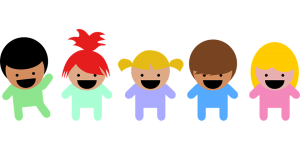
Benefits of Nursery Rhymes
Fun, sparkle and life lessons are some of the benefits that children experience through song, rhyme, play and dance. Children’s rhymes hasten phonemic awareness and improve kids’ intellectual capacity and communication skills. Additionally, these rhymes teach toddlers important skills such as, the ability to follow directions, keen listening and boosting their memory.
Examples of Nursery Rhymes
1. “Old MacDonald Had a Farm”
This is a popular children’s song about a farmer called MacDonald who had various animals that he kept on his farm. The verses of the song change the farm animal and its corresponding sound as the song goes along. For example, a verse that uses a dog will use “woof, woof” as the animal’s sound.
This version has seven farm animals namely, dog (woof-woof), chicken (cluck cluck), duck (quack quack), cow (moo moo), pig (oink oink), cat (meow meow), and donkey (hee-haw)
2. The Abc Song
The abc song is one of the most common nursery rhymes. It is also known as the alphabet song. It has several variations such as;
•Backwards Alphabet – A version that starts from Z to A as opposed to A-Z. “Now you know your ZYX’s”
•Zed for Zee – Z is pronounced zee in the US; while in most other English speaking countries like the UK and Canada, the letter is pronounced zed. Respective lines of the songs are shortened or lengthened to accommodate the Zee and zed pronunciations in order to rhyme.
•Phonics song – The English language has 40 sounds and 26 letters, therefore, kids are taught this version of the alphabet song to understand the different sounds associated with the 26 letters for phonemic awareness.
•Acrostic songs – This is a version where kids say a word that starts with the respective letter as they go through the alphabet. For example, “A is for apple”
3. “Baa, Baa, Black Sheep”
This is an English nursery rhyme; the earliest remaining version is from 1731, and the words have been pretty consistent for a period of over half a millennium ago. It is alleged to have been created as a complaint against medieval taxes on commodities such as wool, and also slave trade. It is thought that the taxes then were a whopping 66%!
“One bag is for master” master represents the king. “One bag is for the Dame” Dame represents the church, who also required tax, and the other bag is for “the little boy” who “lives down the lane” meaning the sheepherder who provided the wool from his sheep. It has the same tune as Twinkle, Twinkle, Little Star and The Alphabet Song.
Some variations of Baa Baa Black sheep are;
•“Baa Baa Little Lamb” which is the Norwegian version and “Little sheep, Little Sheep, Have you white wool”; a Dutch version.
Conclusion
The impact of Nursery rhymes cannot be denied because they enlighten and make children enjoy their childhood. In all their different tunes and variations, toddler’s songs are worth the while!